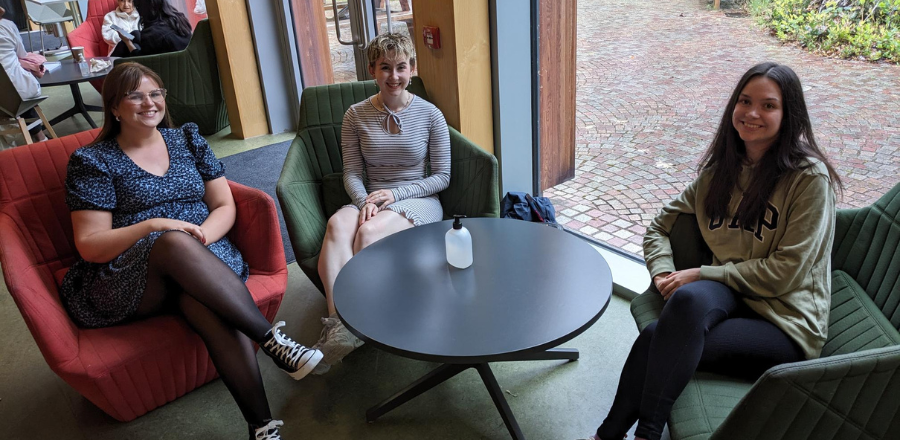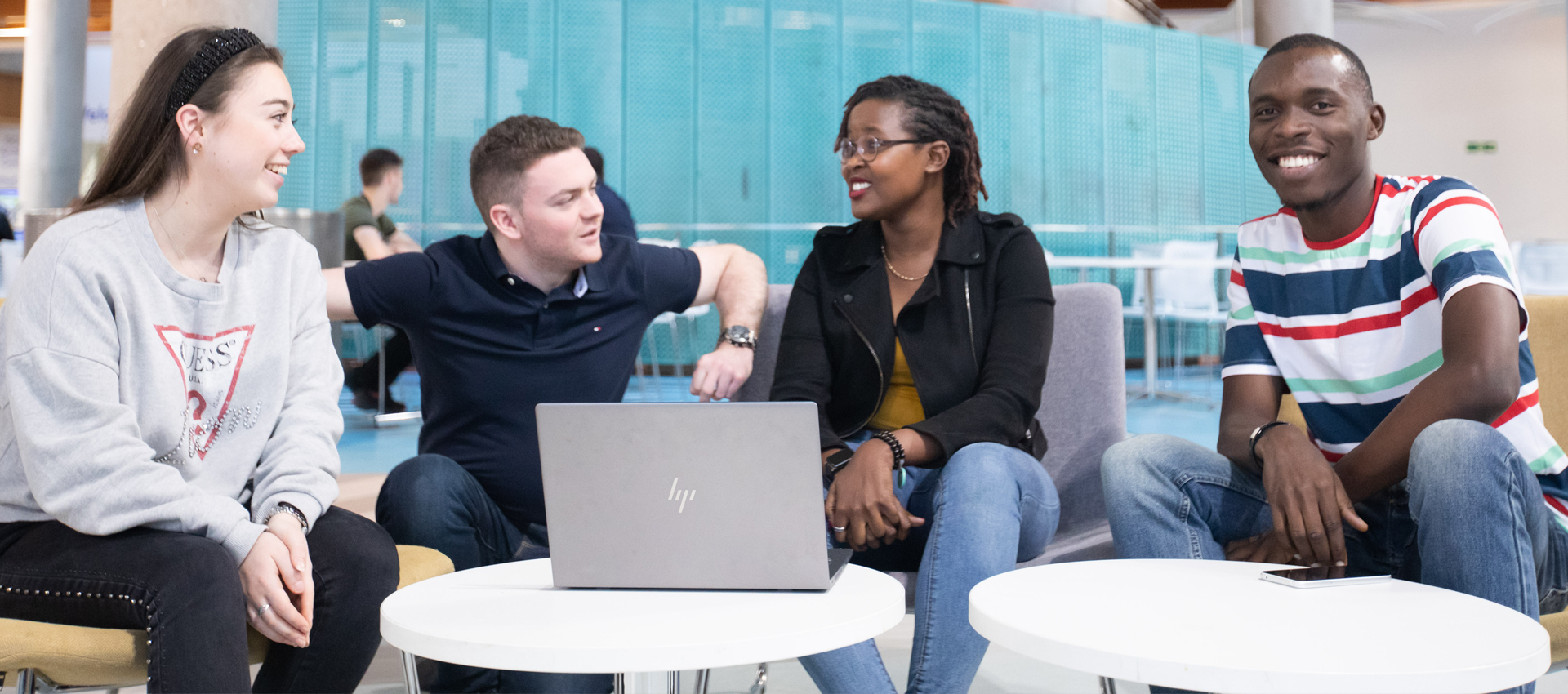Students help make their profession a better place thanks to conference experience

A trio of final year GCU students are helping create change throughout the world of Radiography after having their motions passed unanimously at an annual conference.
Students and staff from across the country represented Scotland at the Society of Radiographers Annual Delegates Conference in Leeds between the 15th and 17th of March, with GCU leading the way.
Each region and country across the UK propose motions (a total of 65 this year!) which are then carried forward by the UK Council and put into practice.
Kathryn McGillion and Catherine Mackay wrote and presented motions close to their heart around bullying and Li Fraumeni Syndrome. Despite being unable to actually attend and present at the event., Jessica Tanner’s passion for sustainability and energy efficiency also shone through with a motion she developed,
We sat down with the BSc (Hons) Diagnostic Imaging students to find out more about their work and hear all about the conference:
Tell me about the motions you put forward, and why this was important to you?
Jessica: “I wrote my dissertation about the energy that could potentially be saved by switching off scanners in hospitals. It was mostly about x-ray machines, CT, MRI and also computers. I basically did a review of literature that looked at all these different scanners and the money that could be saved and then in my recommendations for practice I said that a motion could be put forward to the Society of Radiographers to start the Switch It Off campaign.
“It’s basically for radiographers to be more mindful when machines aren’t in use and to have an idea of how much energy could be saved. I think it’s really important because I noticed when I was on placement there was so much waste in general in hospitals, especially around plastic and energy. I wanted to do something that could easily be applied: literally just switching machines off. It definitely helped that I had evidence there showing that it could save energy.”
Kathryn: “I did my work in conjunction with our lecturer Louise McKendrick. She had initially written it and I went over it with her to consolidate a full speech. Li Fraumeni Syndrome is a hereditary genetic condition and we don’t currently have surveillance guidelines for it in Scotland, and there’s only two places in England that do it at the moment. The rest of Europe and North America also have guidelines, so it doesn’t seem fair that we don’t have that in place. Without it, 50% of individuals go on to develop a secondary type of cancer and 90% develop a first type.
“It’s really important to have this surveillance in place because it prevents the risk of people being diagnosed at a later stage and not having the quality of life where they can’t be treated. It was crucial to raise awareness and highlight that we don’t have surveillance in place. It would also be a lot easier on the NHS if it was so we could catch it earlier and have treatment plans to give quality of life and deliver person centred care for patients.
“It got carried forward unanimously, so I was delighted. I must admit, I was nervous going into it but presenting was actually absolutely fine.”
Catherine: “Claire Currie had been in touch about the opportunity to get involved and mentioned she was representing the Scottish delegation. I was going anyway as part of the Scottish Council for Society of Radiographers, but I wasn’t going to be speaking. Claire had then said about having the opportunity to speak on behalf of other students around bullying.
“The Society of Radiographers used to run a Student Bullying Survey and a Student Placement Survey, but they’ve not been sent out since 2016. I think covid had an impact and priorities shifted, but the last survey had shown that bullying was an issue and there hadn’t been much guidance given.
“Our ask was pretty simple: we wanted to them to put out another survey. Things have changed since 2016, especially around the likes of cyber bullying, which has become much more apparent. There was definitely a need for that up-to-date data. It was quite good because we were quite sure no-one would be against it, and thankfully that turned out to be the case!”
Catherine, you were also the very first person to present their motion at the conference. How did that feel?
Catherine: “I was so nervous but it was actually good to get it out the way. I didn’t actually know how everything worked because I hadn’t attended before – motions have to be seconded by another delegation in order for it to pass. You’re also timed as well, so I was worried I was going to go over the five minutes. It was also being live streamed to people across the UK, on top of the 300 people in the room! I’m quite a talkative person but it was nerve-wracking, I could feel my knees going.
“I think it was quite memorable though because it was the first one. Later on in the day one of the guys from the Society of Radiographers came up and done an interview with me.
“Most importantly, since the motion was approved the survey has now been put out.”
Was the conference a good way to round off your University experience?
Kathryn: “It was great. I didn’t really know what I was getting myself into, other than the fact it was going to be a conference with different motions put forward. Until you get there you don’t really have a proper insight.
“It was fantastic, and particularly great to network with all the other radiographers in our field from all over the UK. I also liked having the opportunity to meet our Scottish representatives as well. I’d happily go back again!”
Jessica: “I obviously didn’t actually go to the conference but it was really great that the other girls took my motion with them. The fact it was unanimously passed was incredible and means that it’s actually going to be used in practice. It’s such a simple thing and hopefully it’ll make a big difference.”
Catherine: “I think the conference overall is done in a good way because you hear from people who are actually out there working on the ground. People higher up have an idea of what’s going on but students, lecturers and clinical radiographers can give that insight that really helps the profession develop.”
Find out more about the BSc (Hons) Diagnostic Imaging course
By Ross Clark
Got an SHLS or GSBS story? Email me at Ross.Clark@gcu.ac.uk or message me on Twitter
